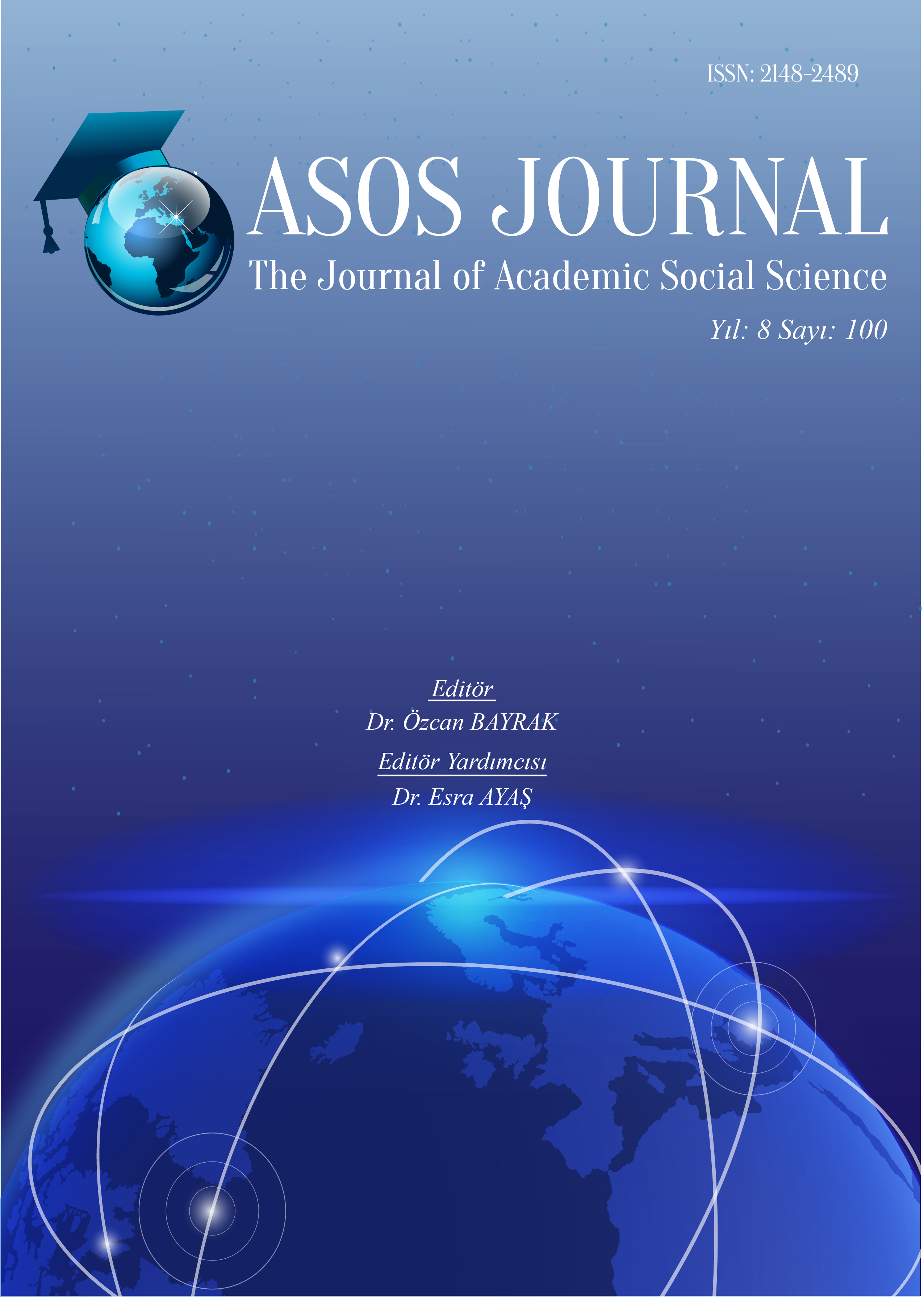Author :
Abstract
Bu çalışma, bir üniversitenin hazırlık bölümündeki toplantı tutanaklarının sosyal bir kurumun sözlü kaydı olarak incelenmesini amaçlamaktadır. Çalışma, akademik personelin etkileşimi ve ilişkileri ile bu akademik topluluğun genel iletişimsel özelliklerini anlama üzerine odaklanmıştır. Yazılı metnin içeriğinin yanı sıra, metnin dilbilimsel formülasyonları, kullanılan kalıplar, cümleler, tekrarlanan söz edimleri ve yazarın eseri takdim şekli analiz sürecinde ele alınır. Bu makalenin amacı, yazılı metinlerde dilin iletişim için nasıl kullanıldığını keşfetmektir. İletişim sisteminin yapısı ve uygun bir sosyal etkileşim için gerekli olan iletişim bileşenleri analiz edilecektir.
Keywords
Abstract
This study aimed at examining the discourse of the meeting minutes of a university preparatory department as the verbal record of a social institution. The focus is on the interaction of the academic staff members and understanding their relations as well as the general communicative characteristics of the academic community. Apart from the content of the written text, the linguistic formulations of the writer, patterns, phrases, repeated speech acts, and the way the author introduces the piece of written work are considered during the analysis process. The purpose of this article is to discover how language is used for communication in social written contexts. The structure of the communication system and communication components for the appropriate social interaction will be analyzed.
Keywords
- Brown, G.,& Yule, G. (1983). Discourse analysis. Cambridge: Cambridge University Press.
- Celce-Murcia, M & Olshtain, E. (2000). Discourse and Context in Language Teaching: A Guide for Language Teachers. Cambridge: Cambridge University Press.
- Duranti, A.,&Goodwin, C. (1992). (Eds.). Rethinking Contex: Language as an interactive phe- nomenon. Cambridge University Press.
- Fairclough, N. (1989). Language and power. UK: Longman Group.
- Fairclough, N. (2013). Critical discourse analysis: the critical study of language.New York: Routledge.
- Fromkin,V., & Rodman, R. (1974). An Introducton to Language. New York: Holt, Rinehart and Winston.
- Fulcher, R. (2010). Critical Discourse Analysis. London and New York. Longman.
- Gee, J.P. (2001). An Introduction to Discourse Analysis Theory and Method. New York:Routledge.
- Grice, H. P. (1975). “Logic and conversation”, (Eds. P. Cole and J. Morgan), Syntax and semen- tics 3: speech acts, pp. 41-58, New York.
- Halliday, M.A.K, & Hasan, R. (1989). “Context of Situation, (Ed. Frances Christie), Language, context and text: aspects of language in a social-semiotics perspective, p.1-12, Oxford.
- Hatch, E. (1992). Discourse and Language Education. Cambridge: Cambridge University Press.
- Levinson, S.(1983). Pragmatics. New York: Cambridge University Press.
- Lucke, A. (1996). Text and Discourse Analysis. New York: American Educational Research Association. Vol. 21:3-17.
- McGregor, S.L.T. (2010). Critical Discourse Analysis: A Primer. Halifax. Mount Saint Vincent University.
- Okot, M.B. (2007). Text and Textuality in Oral Performance. London. Sage Publications.
- Richards, J.C,&Schmidt, R. (2002).Dictionary of Language Teaching and Applied Linguistics. Longman Pearson Education.
- Widdowson, H. G. (2007). Discourse Analysis. Oxford: Oxford University Press.
- Yule, G. (2006). The Study of Language. Cambridge University Press.





